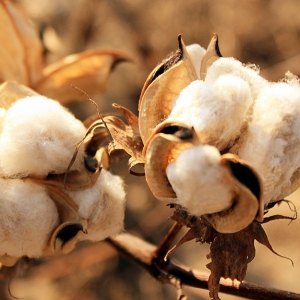The “13th Five-Year Plan” is a critical period that determines the transformation of my country’s cotton industry from large to strong

Over the years, China’s cotton industry has laid a solid foundation for China to become a producer, exporter and consumer of large fabrics for workwear. However, my country’s cotton industry is still “big but not strong”, and there are two problems at the same time: on the one hand, my country’s cotton supply is seriously exceeding demand, and many cotton purchasing and sorting companies are struggling; on the other hand, some fabric companies cannot buy fabrics that meet quality requirements. of national cotton.
The main reasons are: First, the cotton planting area is scattered, the level of mechanization is low, and the supporting services are backward. Second, the cotton industry policy lacks overall consideration. The state invests a large amount of financial funds to subsidize cotton farmers. Growers attach great importance to the subsidy amount but despise the market value. Mixed-level and mixed-level phenomena occur from time to time. Third, many large-scale workwear companies in China are mostly “organizing companies” with strong production capabilities, but weak design and marketing capabilities. They are at the low end of the value chain, and price competition has become the main method of competition. With the loss of low-cost advantage, the competitive advantage of China’s cotton textile manufacturing industry has weakened.
To this end, the “Thirteenth Five-Year Plan” period should actively promote the transformation of my country from a large cotton industry to a powerful cotton industry, and realize the transformation of China’s cotton industry production, finishing and manufacturing into Chinese intelligence, Chinese design, Chinese quality, and Chinese brands. Waiting for transformation.
, build an industrial chain governance model and enhance the overall competitiveness of my country’s cotton industry. The establishment of a cotton industry chain governance model innovates the rules, mechanisms, methods and activities for governing industrial public affairs. It takes the entire industry and common interests as the value orientation, ensures fair dialogue, consultation and cooperation among multiple actors, breaks down industry barriers, and jointly responds to the global epidemic. Industrial changes and challenges, realizing the integration of all elements of agriculture, industry and service industries in China’s cotton industry chain, and the seamless connection of production and service processes. It is recommended that the pilot use the industrial chain as a unit to compile guidance on the progress of China’s cotton industry during the “13th Five-Year Plan”. Improve the policy decision-making mechanism, pay attention to fair opportunities, and pilot a hearing system for major policies in the website construction industry.
Second, promote the modernization of cotton planting and production, reduce cotton growers’ dependence on financial subsidies, and enhance the market’s leading role in cotton planting and production.
Third, promote the brand building of cotton textile products. Improve the quality standard system and quality management laws and regulations for cotton, cotton yarn, cotton cloth and cotton products. Tax exemptions and exemptions will be provided for the scientific research and design investment funds of enterprises in the cotton industry chain. Promote the brand value evaluation process of my country’s cotton textile products and establish a good image of the Made in China brand.
AAASDFWERTEYRHF
Disclaimer:
Disclaimer: Some of the texts, pictures, audios, and videos of some articles published on this site are from the Internet and do not represent the views of this site. The copyrights belong to the original authors. If you find that the information reproduced on this website infringes upon your rights, please contact us and we will change or delete it as soon as possible.
AA








